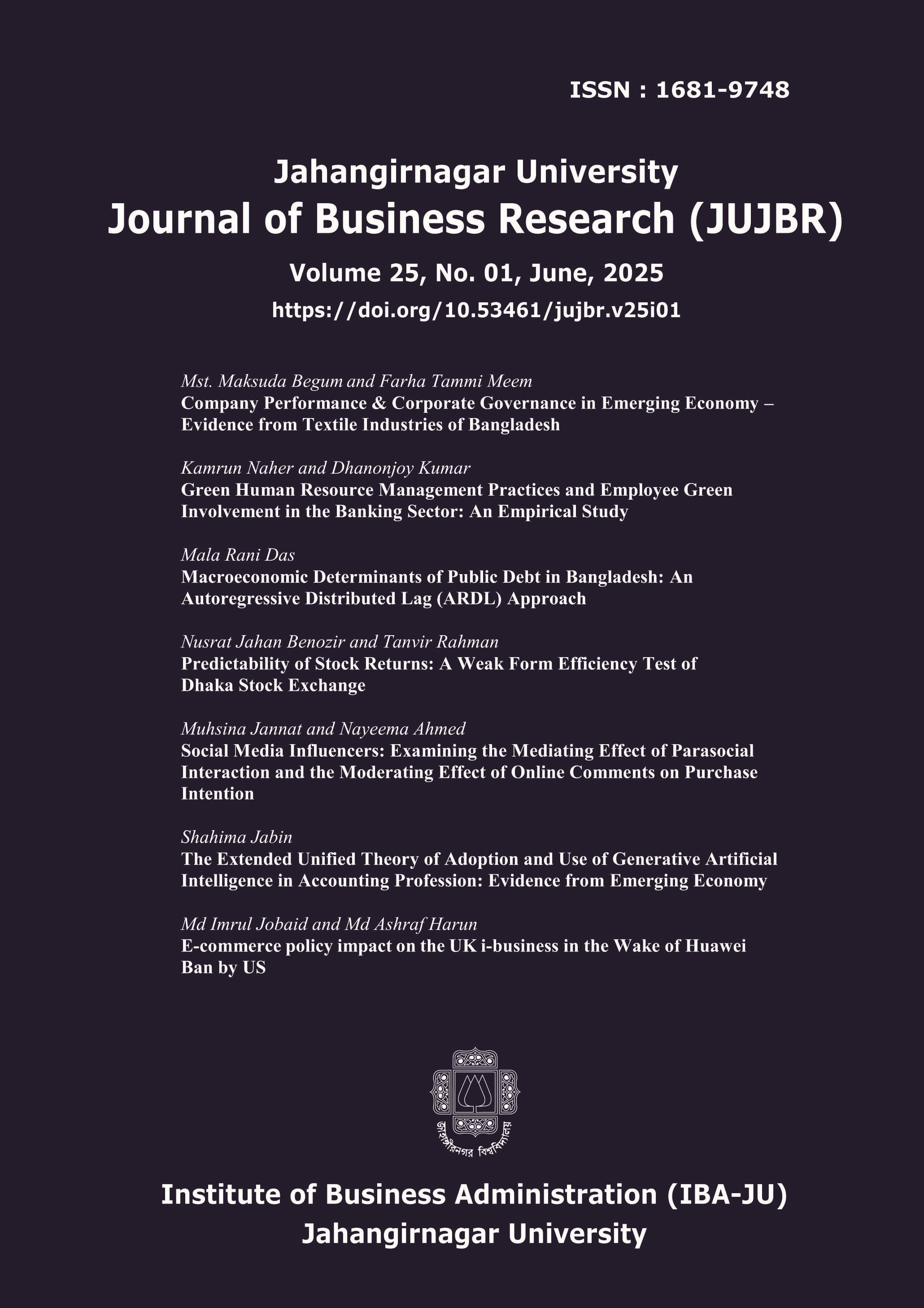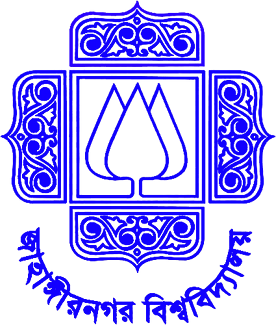The Extended Unified Theory of Adoption and Use of Generative Artificial Intelligence in Accounting Profession: Evidence from Emerging Economy
The Extended Unified Theory of Adoption and Use of Generative AI in Accounting Profession
DOI:
https://doi.org/10.53461/jujbr.v25i01.92Abstract
The research aims to determine the impact of the implementation of generative artificial intelligence (AI) on the accounting profession in Bangladesh by using the extended Unified Theory of Adoption and Use of Technology (UTAUT) model. Another purpose is to show the mediating effect of perceived risk and the moderating effect of experience and job type on the UTAUT model. For this purpose, data are collected from 450 accountants using a structured questionnaire. Statistical analyses are carried out to test the hypotheses of the proposed structural equation model in AMOS 24 and SPSS 23. The research found that traditional variables of the UTAUT model which are performance expectancy, effort expectancy, social influence, and newly introduced variables Reliability perception positively affect the intention to use generative AI in the accounting profession. Another variable facilitating condition positively affects generative AI usage. Another freshly introduced variable Privacy and Security concern negatively impacts the intention to use generative AI in accounting. Another is Training and development which positively affects effort expectancy. All the mediation and moderation analyses are statistically significant. To ensure the uptake and efficient application of generative AI, chartered accountancy firms should prioritize taking training initiatives, resolving privacy and security issues, and creating a positive work atmosphere.

Downloads
Published
How to Cite
Issue
Section
License
©2018 Jahangirnagar University Journal of Business Research. All rights reserved. However, permission is granted to quote from any article of the journal, to photocopy any part or full of an article for education and/or research purpose to individuals, institutions, and libraries with an appropriate citation in the reference and/or customary acknowledgement of the journal.

